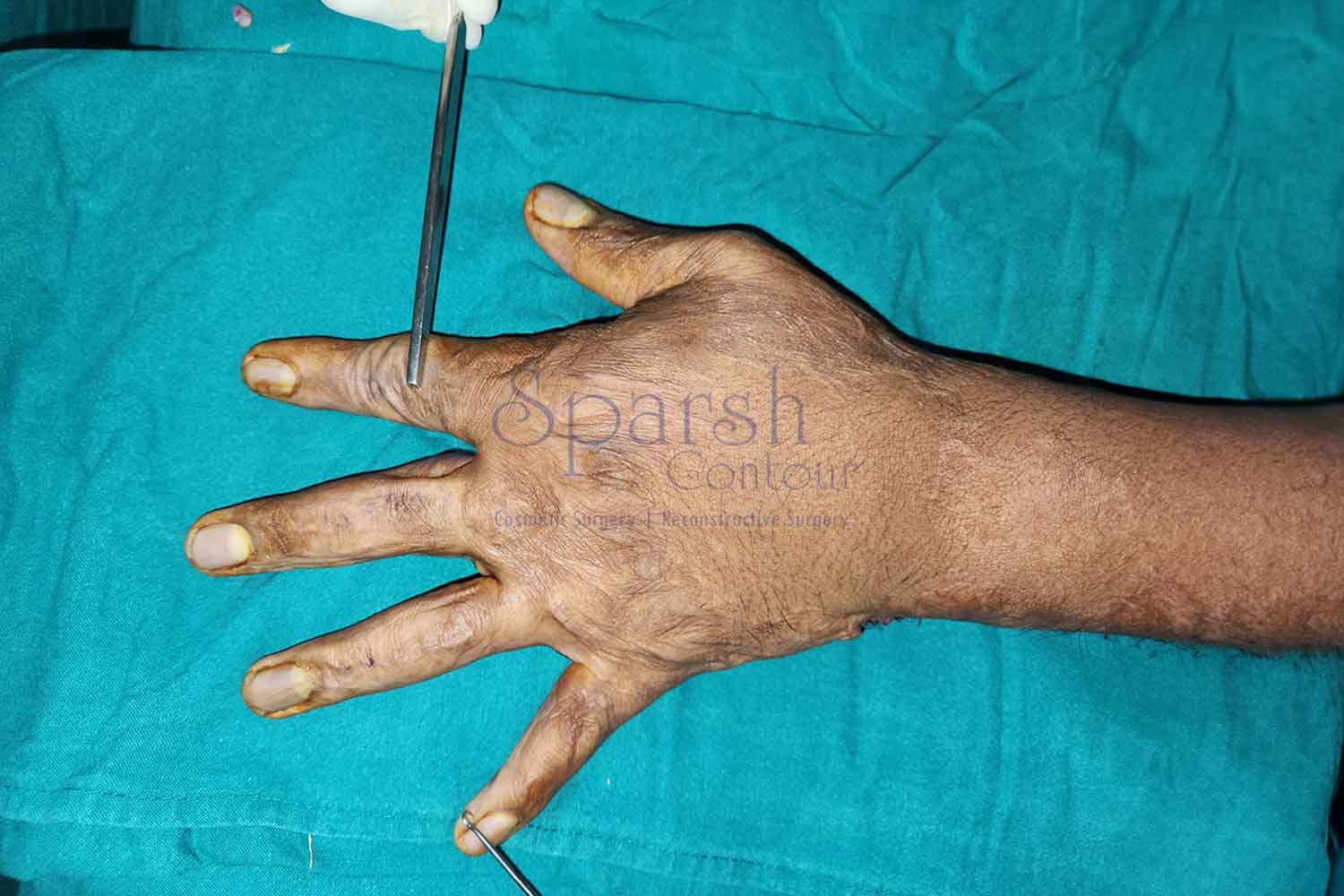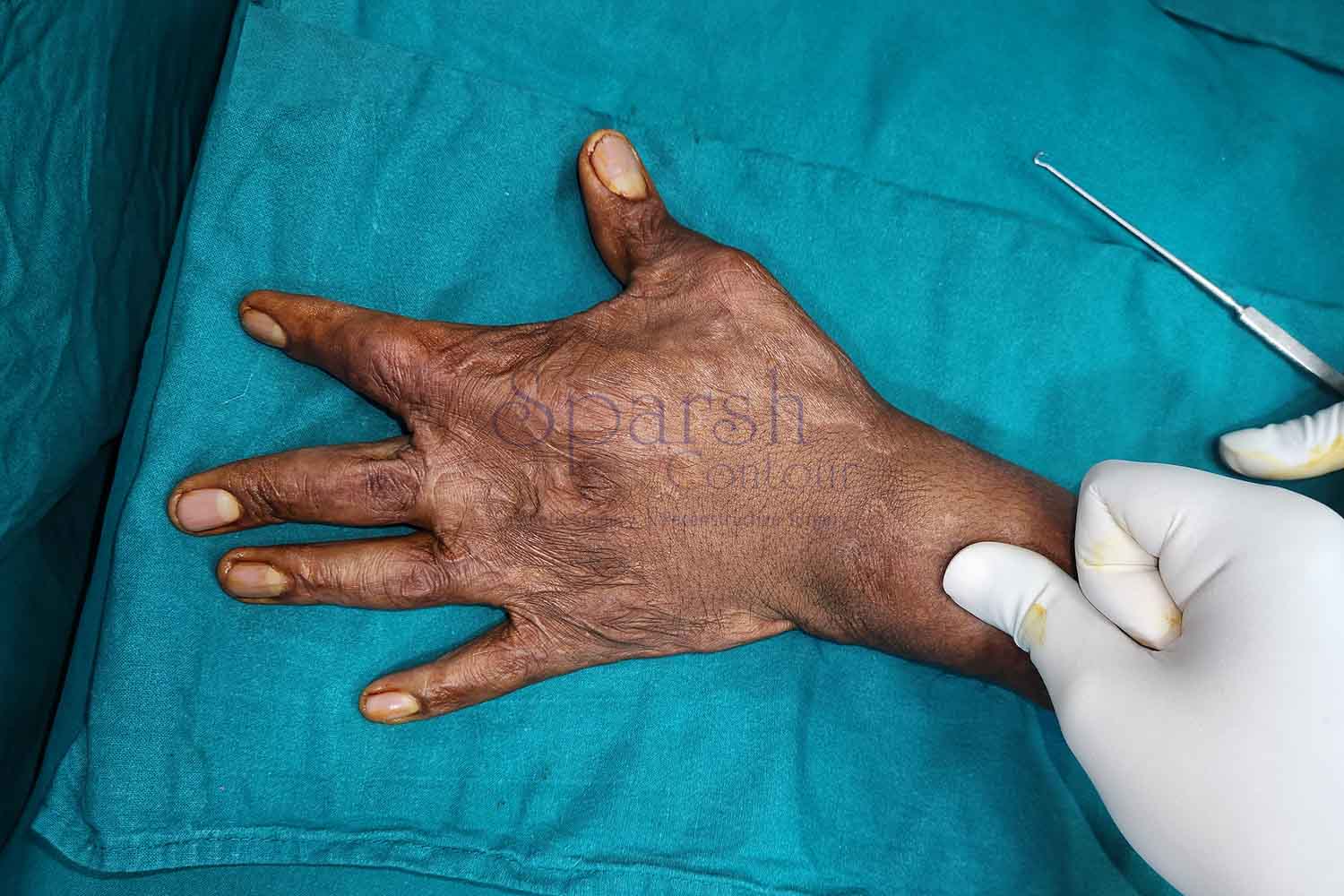Hand Surgeries
Burn Deformities
Burn deformities or contractures occur when the skin and underlying tissues are severely damaged due to burns, leading to the development of tight, rigid scar tissue. This scar tissue, known as a contracture, can limit the normal movement of the affected area, causing discomfort and functional impairment.
Contractures can affect any part of the body, including the face, hands, arms, legs, and neck. In addition to limiting movement, they can also lead to cosmetic deformities, affecting a person’s appearance and self-esteem. The severity of burn deformities depends on the depth of the burn, the extent of the affected area, and the quality of the initial treatment.
Treatment for burn deformities and contractures often involves surgical procedures such as skin grafts, where healthy skin is transplanted to the affected area, or flap surgery, where tissue from a nearby region is used to cover the contracture. In some cases, physical therapy and splinting may be used to improve mobility and prevent further tightening of the scar tissue. The goal of treatment is to restore function, improve appearance, and enhance the overall quality of life for the patient.
Contractures can affect any part of the body, including the face, hands, arms, legs, and neck. In addition to limiting movement, they can also lead to cosmetic deformities, affecting a person’s appearance and self-esteem. The severity of burn deformities depends on the depth of the burn, the extent of the affected area, and the quality of the initial treatment.
Treatment for burn deformities and contractures often involves surgical procedures such as skin grafts, where healthy skin is transplanted to the affected area, or flap surgery, where tissue from a nearby region is used to cover the contracture. In some cases, physical therapy and splinting may be used to improve mobility and prevent further tightening of the scar tissue. The goal of treatment is to restore function, improve appearance, and enhance the overall quality of life for the patient.
 After
After  Before
Before Drag
Hand Surgeries
What Burn deformities treatment is for ?
- Surgical procedures, such as contracture release, skin grafting, and flap surgery, help restore mobility in affected areas, particularly over joints.
- It helps patients regain the range of motion in areas like the hands, arms, legs, and neck, which may have been compromised by burn scars.
- It can rebuild facial features (such as the nose, lips, and ears), restore normal skin contour, and improve the overall appearance of the affected area.
- By improving both function and appearance, burn deformity treatment helps patients regain confidence and a more positive self-image.
our expert answers
frequently asked questions
What types of treatments are available for burn deformities?
Treatments include surgical options like skin grafting, flap surgery, and contracture release, as well as non-surgical options like scar revision, laser therapy, and physical therapy.
What is contracture release surgery?
Contracture release surgery involves cutting and releasing tight scar tissue that restricts movement, often followed by skin grafting to cover the wound and restore mobility.
How do skin grafts work in burn treatment?
Skin grafts involve transplanting healthy skin from another part of the body to cover areas where the skin has been severely damaged by burns, helping to restore skin function and appearance.
Can burn scars be removed completely?
While complete removal of burn scars is often not possible, various treatments can significantly reduce their appearance, making the skin smoother and less noticeable.
How long does it take to recover from burn deformity surgery?
Recovery times vary depending on the type and extent of surgery. Some procedures may require weeks of healing, while more extensive reconstructions might take months, including rehabilitation.
Will I need multiple surgeries for my burn deformities?
In many cases, multiple surgeries are necessary to achieve the best possible outcome. This might include initial treatment, followed by reconstructive procedures and scar revision over time.
APPOINTMENT
